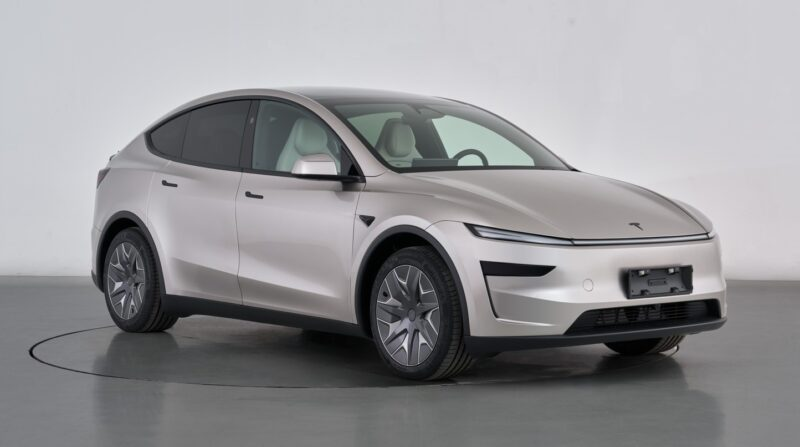In a groundbreaking shift for the electric vehicle (EV) market, 2024 is poised to be a pivotal year thanks to significant changes in EV tax credits. According to recent reports from Electrek and Bloomberg Green, these changes are expected to accelerate the adoption of electric cars by making them more affordable for everyday consumers. This article will delve into how the updated EV tax credits are reshaping the landscape, what this means for car buyers and manufacturers, and how you can take advantage of these benefits.
Understanding the New EV Tax Credits in 2024
What Are the Changes?
In 2024, the U.S. government will implement revised tax incentives for electric vehicles, a move aimed at propelling the nation toward its ambitious climate goals. These incentives are not only more generous but also more inclusive than previous iterations. Here’s what you need to know:
- Increased Credit Amounts: The maximum tax credit available for new electric vehicles has been increased from $7,500 to $10,000. This adjustment makes EVs financially accessible to a broader audience.
- Eligibility Expansion: The new criteria include more vehicle models and manufacturers. Even brands like Rivian and Lucid Motors, previously excluded, now qualify.
- Income Cap Adjustments: The income cap for eligibility has been raised, allowing more middle-income families to benefit from the credits.
- Renewed Focus on Used EVs: For the first time, buyers of used electric vehicles can receive up to $4,000 in tax credits, incentivizing the purchase of pre-owned models.
Impact on Electric Vehicle Sales
The revision in tax credits is expected to significantly boost EV sales in 2024. According to InsideEVs, sales are projected to increase by 15% compared to 2023, with an estimated 1.5 million units sold. This surge is largely attributed to:
- Enhanced Affordability: The increased credits lower the overall cost of EV ownership, making them competitive with traditional gasoline vehicles.
- Broader Market Appeal: With more models qualifying for credits, consumers now have a wider range of options, from compact cars like the Nissan Leaf to luxury models such as the Tesla Model S.
- Rising Environmental Awareness: As people become more environmentally conscious, the combination of tax incentives and eco-friendly benefits makes EVs an attractive choice.
How to Make the Most of EV Tax Credits
Steps to Qualify for the 2024 EV Tax Credits
To maximize your benefits from the 2024 tax credits, follow these steps:
- Research Eligible Models: Check the latest list of qualifying vehicles on sites like AutoCar and CleanTechnica. Ensure that the model you’re interested in meets the requirements.
- Understand Your Eligibility: Review the income caps and other eligibility criteria. Consult with a tax advisor to clarify your specific situation.
- Purchase Timing: Consider buying your vehicle early in the year to take full advantage of the credits before any potential policy changes.
- Explore Financing Options: Many dealerships offer financing deals that incorporate tax credits, reducing your upfront costs.
Where to Buy Your Next EV
With the increased availability of tax credits, here are some recommended places to purchase your EV:
- Authorized Dealerships: Brands like Hyundai and Ford EV have a wide network of dealerships offering certified vehicles eligible for credits.
- Online Marketplaces: Platforms like Electrek’s EV Marketplace provide a comprehensive selection of new and used EVs, often with detailed eligibility information.
- Direct from Manufacturers: Companies such as Tesla and Lucid Motors allow you to order directly from their websites, ensuring you get the latest models that qualify for tax credits.
Comparing EV Models and Brands
When selecting an EV, it’s essential to compare models and brands to ensure you get the best value. Here are some top picks for 2024:
- Budget-Friendly Options: The Nissan Leaf and Hyundai Kona Electric offer excellent range and features at an affordable price point, especially with the new tax credits.
- Luxury and Performance: The Tesla Model Y and Lucid Air provide high-end features and performance, now more accessible thanks to increased credits.
- Innovative Newcomers: Rivian’s R1T and Volkswagen’s ID.4 bring innovation and sustainability to the forefront, making them excellent choices for tech-savvy consumers.
Conclusion: Embrace the Future with EV Tax Credits
In summary, the 2024 changes to EV tax credits are set to revolutionize the electric car market, making EVs more accessible than ever. By understanding the new incentives, researching eligible models, and making informed purchasing decisions, consumers can take full advantage of these benefits. As the world increasingly shifts towards sustainable transportation, this is the perfect time to consider an electric vehicle. What are your thoughts on these changes? Are you ready to make the switch to an EV in 2024? Let us know in the comments below and join the conversation on the future of transportation.
As we look towards a future where electric vehicles dominate the roads, the 2024 tax credits are a significant step in achieving global sustainability goals. Stay ahead of the curve and embrace the electric revolution today!

